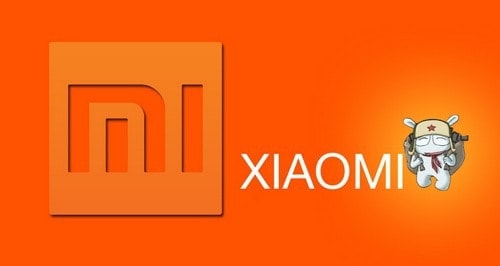The Marketing mix of Xiaomi analyses the 4Ps of Xiaomi, including the Product, Price, Place, and Promotions. Xiaomi is a privately owned Chinese electronics design and manufacturing company. Founded by Lei Jun in 2010, the company has its headquarters in Beijing and ranks fourth on the list of the top smartphone makers in the world. Its consumer electronics and computer hardware products are some of the fastest moving in China. The rate at which Xiaomi is growing is alarming to Samsung and Apple as the company has almost positioned itself as the top Smartphone spot in China.
Competitors
- Samsung
- Apple
- Huawei
- Oppo
- Vivo
About Xiaomi
- Type: Electronics company
- Industry: Smartphone, innovative hardware,
- Founded: April 6, 2010
- Founder: Lei Jun
- Headquarters: Beijing, China
- Area served: Worldwide
- Key people: Lei Jun (Chairman)and Lei Jun Current (CEO)
- Number of employees: 107,500
Table of Contents
Xiaomi Product Strategy
Xiaomi, a major Chinese electronics company, is known for its diverse product mix.
The new Product Mix of Xiaomi in 2023 is as follows (Source).
- Smartphones are Xiaomi’s primary product category, featuring various models at various prices. This includes the Mi, Redmi, and POCO series.
- Smart Home Devices: Includes bright lighting, security cameras, smart plugs, air purifiers, and other IoT (Internet of Things) products.
- Wearables: This category covers fitness bands like the Mi Band series and smartwatches.
- Laptops and Tablets: Xiaomi produces laptops under the Mi Notebook series and tablets like the Mi Pad.
- Audio Products: Includes a range of earphones, headphones, and Bluetooth speakers.
- Television and Entertainment: Xiaomi TVs (Mi TV series), streaming devices, and soundbars are popular.
- Lifestyle and Health Products: Includes electric scooters, smart scales, and other health and lifestyle gadgets.
- Accessories: Power banks, chargers, cables, and phone cases.
- Smart Appliances: Refrigerators, washing machines, air conditioners, and other smart home appliances.
- AI and Software Services: MIUI, Xiaomi’s custom version of Android, and other software services.
- Other Electronics: Routers, projectors, and other electronic devices.
The company continuously innovates and expands its product line and portfolio so that newer products may have been launched after my last update. Checking Xiaomi’s official website or recent announcements for the latest information would be advisable.
Xiaomi Place Strategy
Xiaomi is a Chinese company but for a broader target market than just China. However, its strong base is within its homeland, China. As of now, the company is also emerging in 11 other countries. These emerging markets include Turkey, Malaysia, Mexico, Thailand, Philippines, Russia, Singapore, Indonesia, Brazil, India, and Vietnam, with most countries in the BRIC and South East Asia regions. Despite trying to enter lucrative international markets, Xiaomi‘s primary focus is still in China, as it already has a formidable consumer base.
Most of Xiaomi’s sales are online rather than offline markets. As a result of the distribution strategy, a win-win situation is realized by both the manufacturer and the consumer. The company saves lots of money from building and managing stores as customers quickly access products without paying the distributor, wholesaler, and retailer.
Here’s the place strategy of Xiaomi.
- Online Sales Channels: Xiaomi initially adopted an online-only sales approach, leveraging e-commerce platforms to reduce operational costs and offer competitive pricing. This strategy enabled them to reach a broad, tech-savvy audience globally with minimal physical presence.
- Physical Retail Stores (Mi Stores): Over time, Xiaomi expanded into physical retail through Mi Stores, enhancing brand visibility and allowing customers to experience products firsthand. These stores are strategically located in high-traffic areas in key markets.
- Global Expansion with Local Adaptation: Xiaomi has successfully entered international markets by tailoring its product offerings and marketing strategies to local tastes and preferences. This approach has been crucial in India, Southeast Asia, and Europe.
- Partnerships with Local Distributors and Retailers: Xiaomi collaborates with local distributors and retailers in various regions to widen its reach. These partnerships are vital for market penetration, especially in areas where online shopping is less prevalent.
- Investment in After-Sales Services and Support: Recognizing the importance of customer service, Xiaomi has been investing in after-sales support networks, including service centers and online support platforms. This strategy helps build customer trust and brand loyalty, especially in overseas markets.
Xiaomi Pricing Strategy
Most of the money on Xiaomi products is strictly spent on design and production. The company tries to save as much as it can, even promotional costs, thus offering products to the market at an affordable rate. In other words, on average, Xiaomi products are lowly priced. The company mainly employs social media advertising and marketing strategies that don’t cost much. In addition, most of the products are sold online, thus reducing the cost that would have been spent to set up offline stores.
The company employs a pricing strategy that will help them get profits in the future. It is a sell-low-today but gains later strategy. They, therefore, sell their devices at the exact cost that only covers production costs. Their profit generation focuses on the accessories, apps, and services used with their mobile phones, computers, etc. Xiaomi has proven that cheap pricing doesn’t always mean cheap products.
Xiaomi’s aggressive pricing tactics and strategy are a masterful blend of market insight and consumer psychology rooted in delivering high-value products at incredibly competitive prices. Here’s an overview of their economy pricing approach:
- Value-Based Pricing: At the heart of Xiaomi’s pricing strategy is offering technologically advanced products at significantly lower prices than their competitors. This value proposition is not just about being the cheapest; it’s about providing a high-quality experience at a price that feels like a steal, creating a perception of high value for money.
- Penetration Pricing: Xiaomi often enters new markets with penetration pricing, setting lower price points to attract a large customer base quickly. This tactic is especially effective in price-sensitive markets, where consumers seek affordable yet high-quality tech products.
- Cost-Plus Margin: Xiaomi maintains profitability through a cost-plus margin strategy despite offering lower prices. They minimize production costs with efficient supply chain management and economies of scale, allowing them to add a reasonable margin without overpricing their products.
- Dynamic Pricing: Xiaomi employs dynamic pricing strategies, particularly in its online channels, adjusting prices based on market demand, competition, and inventory levels. This approach helps them stay competitive and responsive to market changes.
- Ecosystem Pricing: Xiaomi’s broader ecosystem of products – from smartphones to smart home devices – is strategically priced to encourage customers to purchase within the Xiaomi ecosystem. Cross-product subsidizing allows them to offer some products at lower margins while making up profits on complementary products.
- Flash Sales and Limited Availability: Initially, Xiaomi used flash sales and limited product releases to create a sense of urgency and exclusivity. This strategy helped manage inventory and create a buzz around their products, thus driving up demand.
Xiaomi Promotion Strategy
Xiaomi actively uses social media, among other digital marketing distribution channels, to not only broadcast their messages and agenda but also to get and remain in touch with their customers and potential customers. The company’s engineers also use social media, especially Facebook, to routinely communicate to users for feedback. Such feedback is used in the development of new products.
The use of flash sales helps the company sell its smartphones and other products in limited numbers and within minimal periods. This marketing strategy is an essential sales strategy that enables the company to save money that would have been used in advertisements, as the strategy creates urgency and anticipation in consumers. A limited number of products are produced and sold relatively fast, thus making others wait for the next batch. The wait is always with a lot of anticipation and urgency. Many people end up talking, especially on social media, thus unknowingly promoting Xiaomi products.
Xiaomi has a massive and formidable fan base that has successfully shown its support for the Xiaomi products. These fans are always present whenever a new product is being launched. The presence of such a fan base alone is enough applause and noise to attract the attention of potential customers.
Some Recent Video ads and Print ads for Xiaomi are:
Liked this post? Check out the complete series on Marketing Mix

